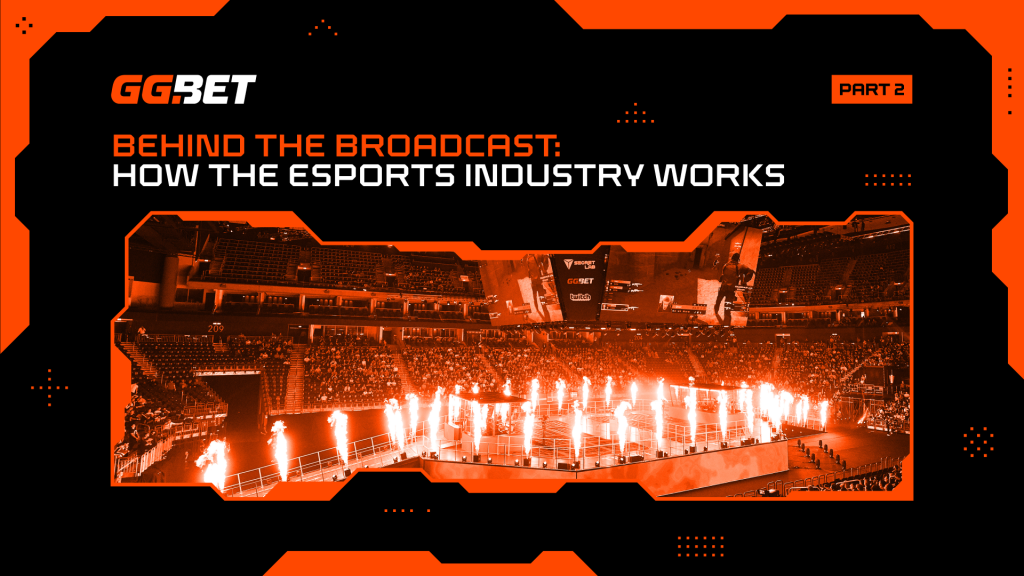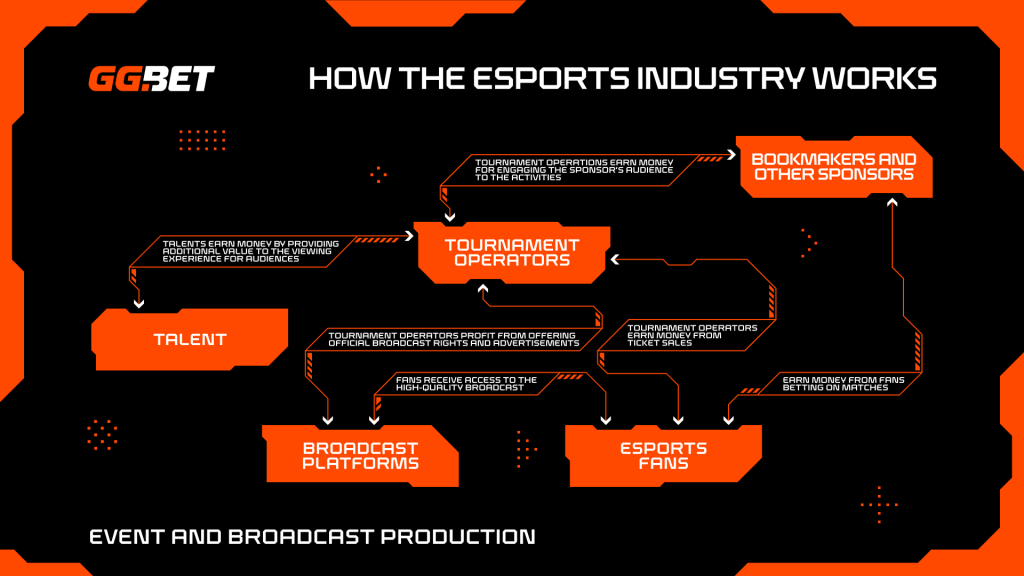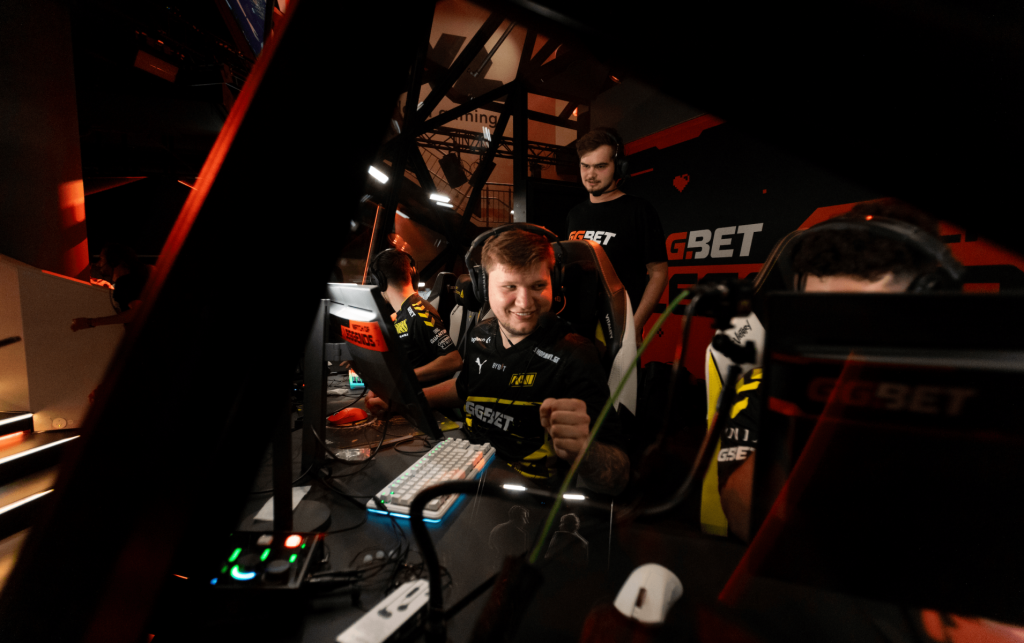
Every fan remembers the first time they got into esports, whether it was following an underdog team at a tournament, watching their favourite streamer co-stream an event or trying to get better at a game while watching pro players in awe.
Esports events are the glue that holds the ecosystem together. They provide a place for teams to compete and fans to watch, whether online or in person. But for all the events fans watch, they are often left in the dark about how the event and the broadcast are run behind the scenes.
In part two of Esports Insider’s three-part series looking at the inner workings of esports, in collaboration with betting brand GG.BET, it’s time to understand how to successfully produce and run esports events.
It’s first important to get the basics down on how esports events work. There are many types of esports events, but what unites them all is that teams compete against one another for a share of the prize pool and occasionally a spot at a more prestigious tournament. Some events will have other bonuses such as sticker money for Counter-Strike Majors or decals in Rocket League. For a full breakdown on how tournaments make money and why esports organisations send teams to them, check out part one of this series.
Whilst many different events can be run online or offline, the esports scene perhaps is ironically at its best during LAN (local area network) events. These spectacles truly showcase the scale of the industry and its passionate community.
At the grassroots level, small local tournaments are often BYOC (bring your own computer). As implied, each player brings their own PC and plays in a space provided by the organiser. These are usually more casual and aim to bring together communities as seen at EPIC.LAN, a UK-based tournament organiser.
Another type of LAN, which is far more popular at a higher level, is a closed door LAN event. These events don’t always have to feature fans in attendance, but rather just the teams who all play against each other in one building.
Computers are provided and usually most, if not all, of the games are streamed on the tournament’s official broadcast. Oftentimes an event will have different stages with notable examples being the 2024 Six Invitational (R6), the ESL Rio Major (CS2), and The International (Dota 2). Closed door LAN events allow international teams to compete against each other with no ping (lag), while avoiding the costs associated with renting out a huge arena until the later stages of the tournament.
Large-scale LAN events typically take place in stadiums or other big venues around the world and feature the game’s best teams competing in front of a crowd. League of Legends Worlds, the Counter-Strike Major playoffs and most other major tournament playoffs will almost always have audiences. These events are not just a tournament, but usually include other activities such as sponsored booths where fans can try out new PCs, or 1v1 a pro player.

What goes into running an event?
Now the basics have been covered. What goes into running an event? What is needed, or more importantly, who is needed?
Every event starts at the planning stage. A team comes together to organise what type of event they want to run, where it will be, and what format it will run in. Tournament organisers need to find a venue, receive permission from the game publisher, and reach out to teams to make sure they are available. With the sheer amount of events going on across the most popular esports titles, it can be difficult to find a time where every top team is free. A good example of this is the Skyesports Masters in CS2, which featured many prominent European and Indian teams, but it clashed with IEM China which all ESL Pro League partnered teams will attend.
Last year GG.BET hosted a Match of LeGGends show-match between its two partnered organisations Team Vitality and NAVI. Dmytro Voshkarin, CEO of GGBET UA, detailed that the entire process, from idea to implementation, took around seven months.
He added: “We don’t like handing over all the organisation of our events to third parties, so the team at GG.BET did the bulk of the preparation. We got our partners involved, of course, like LVL arena in Berlin where the event was being held. It took over 100 people to organise it.”
The next stage is hiring all the staff that are needed for an event. For a fan, the first people that come to mind are the talent — the commentators, the analysts, the hosts — but there are far more staff needed to run a smooth and professional event. From admins and referees to talent managers, there are a lot of unspoken heroes. A tier one esports tournament needs admins, talent management, player management, event managers, press relations, security and many more staff.
Now the event is set up, it’s time to set up the broadcast. The broadcast is essential not only for fans who are watching the action, but it is also an important aspect of making money for a tournament organiser. Since only a small handful of all fans will be at the venue itself, the stream is where sponsors can receive the most exposure and where advertising revenue can be generated.
Esports is not only played on PCs, but also on mobile phones which is a fast growing sector of esports. With that in mind, choosing a suitable platform for the broadcast is very important. Twitch has often dominated the field, being the most used platform for years, but in recent times YouTube or, in the case of BLAST, the use of its own viewing platform (BLASTtv) have become other avenues. PGL, the host of the first CS2 Major, recently streamed the Major on Kick for the first time ever and as mentioned, the rise of mobile gaming has led to TikTok hosting esports’ broadcasts.
The selection is varied and the most successful esports events often utilise multiple platforms in order to reach a larger audience.

Even broadcast production is an entire industry within itself. To run a professional broadcast for an esports event you need advanced hardware (cameras, microphones, computers) and software. On top of this, the tournament organiser needs to hire a crew purely dedicated to the broadcast. This adds a huge amount of personnel to the overall structure of an event.
When running a LAN event, both with or without a crowd, multiple cameras are helmed by camera operators. Meanwhile the ever underrated esports observers are a crucial part of following the action that occurs in the game itself. On the audio side you need sound mixers, people operating roaming microphones, and a team to make sure all the audio syncs up. Behind all these workers are the broadcast managers who have spent months orchestrating the order in which the content will shown. All of these people and more are never in the public eye, but without the vast team behind the faces appearing on stream, the broadcast would not only not run smoothly, it would cease to exist.
As briefly mentioned, Talent are the first thing that comes to mind when fans think of event staff, however, this role should not be downplayed.
“These are the people who tell the stories, set the scene and develop an understanding for the viewers of what is going on,” explained esports host and commentator James Banks.
“If we look at desk hosts they are steering the ship and keeping the show going, by activating their colleagues, normally analysts, to shine. Commentators are the powerful voices that bring life to the game as it is happening, painting a picture with their voices for the viewers and building the emotional backing track to each match as it goes down. Stage hosts for the arenas get the crowd going, entertain and hype the arena and lend their presence to announce the teams and inform the audience of multiple things, putting on a show for everyone watching.”
Overall the running of an event is a hugely underrated part of the esports ecosystem. Without the huge number of staff it takes to run a broadcast and an event there would be nothing for fans to enjoy, companies to sponsor, and players to compete in.
Part 3, the final article in the Behind The Broadcast series, breaks down the impact that betting has had on esports.

